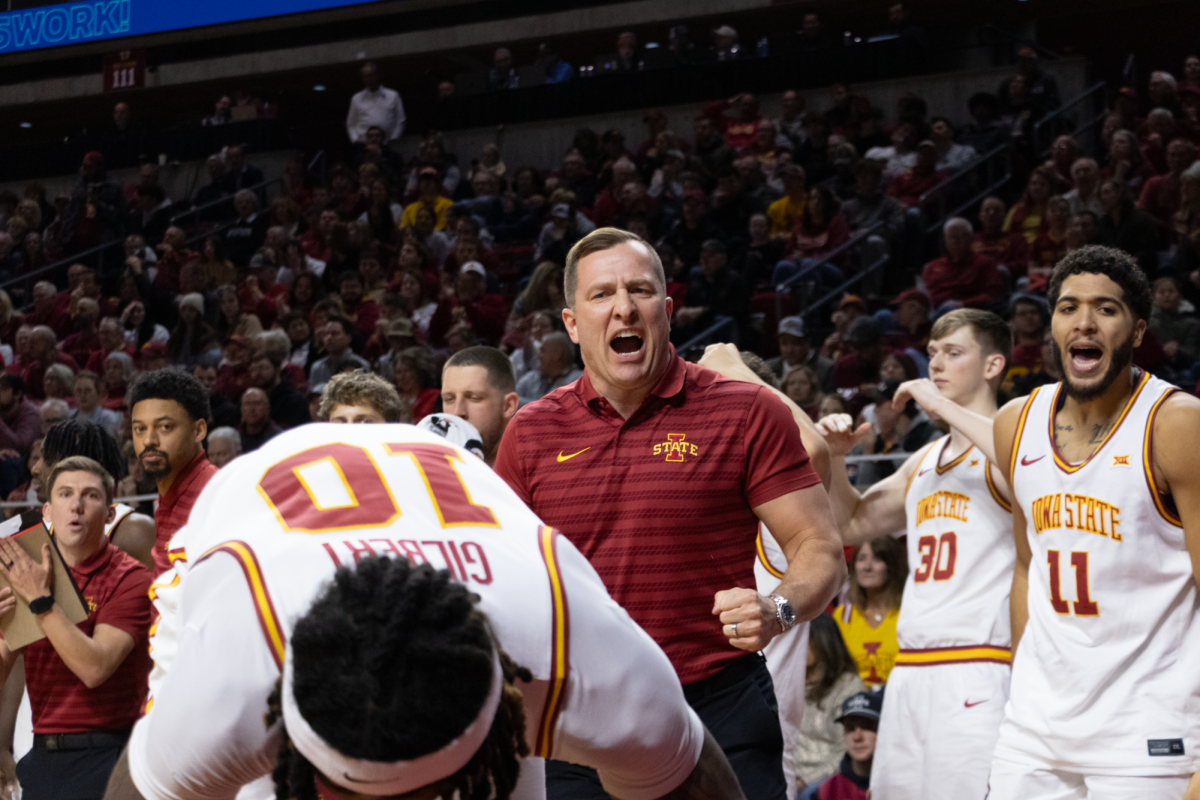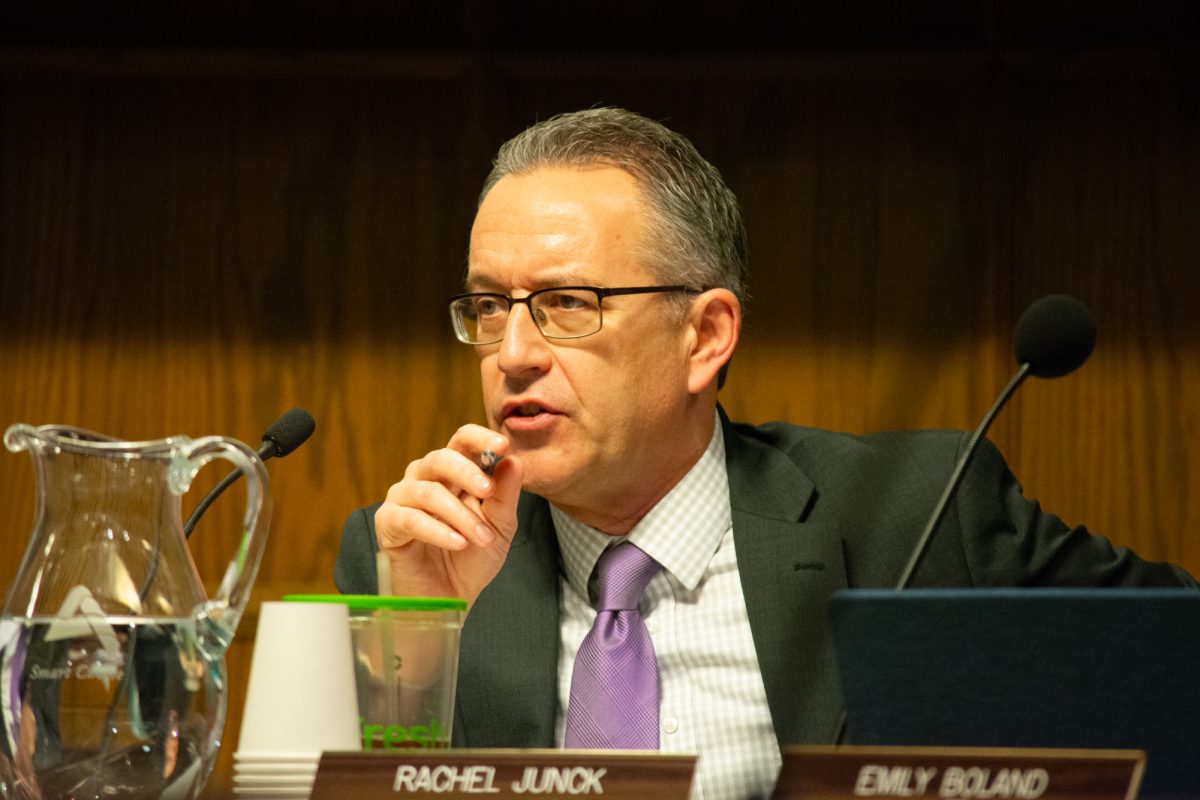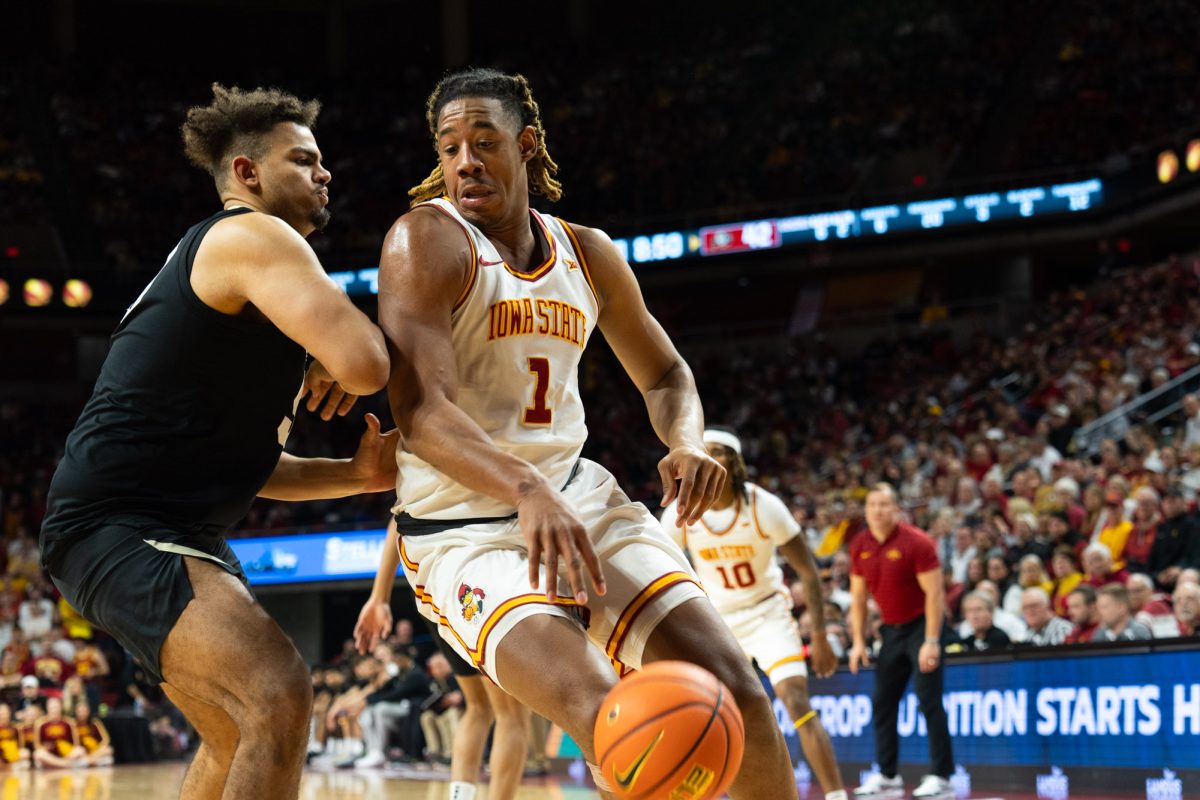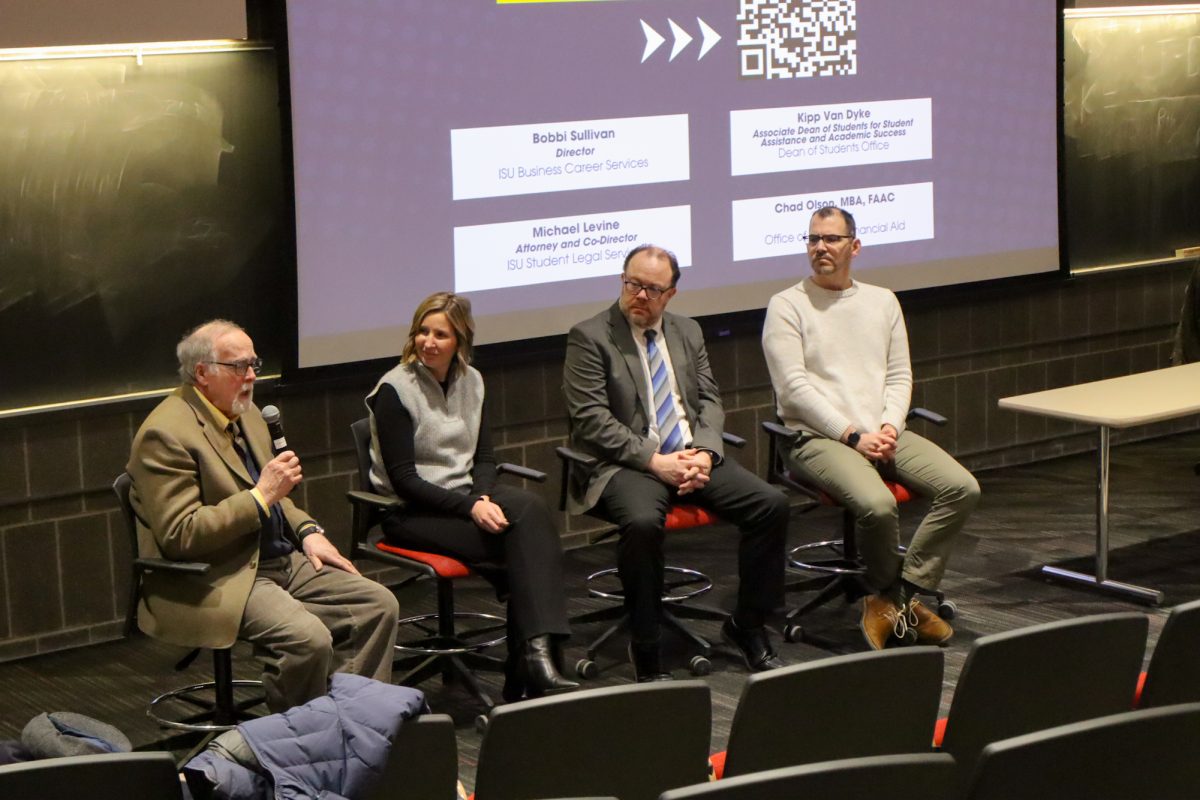Iowa 2000 – Art at the crossroads
October 1, 2000
Once they become nationally recognized, it’s tough for local artists to resist the urge to leave behind their Iowa roots and move to New York City. Art historians, students and the general public converged Sunday at the Des Moines Art Center for “Making Art in Iowa in the 21st Century,” to take part in a panel discussion as part of the Iowa Artists 2000 exhibit. “How do you keep `em down on the farm, once they’ve seen gay Paris?’ said Dr. Dennis Raverty, assistant professor of art history and one of five panel members. Raverty believes measures should be taken to make Iowa a viable place to practice art. “This means providing not just a few art exhibitions a year and a handful of galleries who are willing to take on local artists, but also providing an economic basis for the artists so they can afford to live here and practice their art,” he said. Artist Alex Brown was in the audience. He is a Des Moines native who has returned from New York to paint and is one of the featured artists in the exhibit. “I came back to Iowa to get away from the pressure of New York,” Brown said. Brown has faced the challenge of looking for an old building to fix and use as a workspace. This has been a problem because many of the old buildings are being leveled as a result of all the new construction going on in downtown Des Moines. David Connone, graduate student in painting, is an out-of-state student from Pennsylvania who said he would like to return there because the Des Moines community is not supportive of artists. “Art here is like Latin,” Connone said. “The community needs to be more supportive [of artists], like provide an affordable workspace or anything that would cut costs down.” Panelist James Shrosbee also showcased in the Iowa Artists 2000 exhibition. He emphasized the need for a spiritual renewal in order for a community of artists to emerge. “It doesn’t work from the outside in. The community needs to work from the inside out [to support their artists],” Shrosbee said. “It is important to realize the potential here in Iowa.” Public art commissions can have problems when trying to accomplish their goals. “It’s a difficult process, and there’s a thousand ways they can get off track,” Herbert said. “What we need to talk about is art’s role in the community and the community’s role with the artist.” The panel discussion also shed light on other topics including traditional art, art criticism, public art commissions and building awareness via technology and the Internet. Other panelists included Dr. Rachelle H. Saltzman, Iowa Folklife coordinator for the Iowa Arts council and F. John Herbert and editor of Tractor magazine. Raverty said Iowa needs to work not just on a local level but a national one as well. “Let the nation know Iowa is as rich [for art] as it is,” Raverty said.






